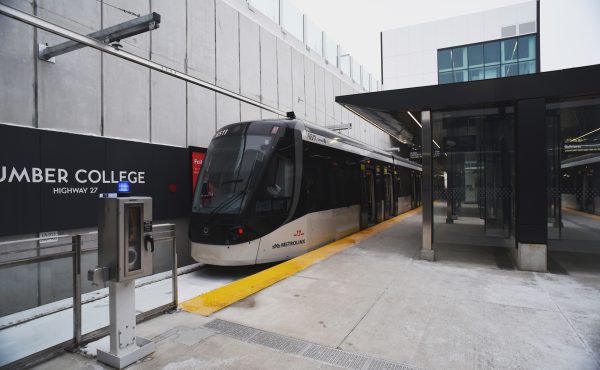 In today’s NYTimes magazine there’s a nice article on the US Interstate system. It’s 50 years old, and is in need of a re-think while undergoing massive renovations. Some neat ideas are proposed, not just the more-roads kind of idea, either:
In today’s NYTimes magazine there’s a nice article on the US Interstate system. It’s 50 years old, and is in need of a re-think while undergoing massive renovations. Some neat ideas are proposed, not just the more-roads kind of idea, either:
The first Bush administration’s plan for a second Interstate System thankfully never took off, and the alternative has become new state-grown plans to build different kinds of road. State highway departments have been taking big roads and narrowing them, adding bike lanes and trails. In the last 10 years, engineers have increasingly looked for ways not to speed cars along but to slow them down. “You can design a road that addresses mobility but also makes them want to get out of the car,” says Tom Warne, a former executive director of Utah’s Department of Transportation who is working with New Hampshire’s D.O.T. “It’s the stuff that’s along the street — windows, benches, street furniture, greenery. There’s meandering.” In Pennsylvania, where general traffic increased by 63 percent and truck traffic by 82 percent between 1984 and 2004, there are plans to make communities across the state more walkable, to build new highways at grade rather than elevate them, to build on Route 202 in the eastern part of the state what looks less like a freeway and more like an old parkway.
The QEW was originally a grand parkway but over the years evolved into an alienating freeway. Just east of the Humber bridge, in the park by the lake, there is a big stone deco lion that was once in the middle of the QEW, acting as a sort of marker at the start of the parkway. There’s something romantic about those first years of real automotive independence, before things became unsustainable, when driving was pleasurable and guilt free. Actually that era didn’t end for me until I moved away from Windsor in 2000, where I couldn’t have survived without a car. There are still moments on the DVP when driving can be sort of beautiful, when the city appears after the big curve just past Don Mills, or flying through the city on the Gardiner, weaving in and out of the buildings by the Air Canada Centre — but that romance is fleeting.
The article also touches on how much the interstate system affected the social and geographic topography of the United States.
But the Interstate System has also given us a lot that we didn’t expect. In building it during the 60’s, the U.S. destroyed nearly as much public housing as it put up. Then again, in a backhanded way, the Interstate System helped spawn the modern environmental movement, with the battle over I-40 through Overton Park in Memphis, for example, and with the fight over I-75 though the Everglades. It gave us historic preservation, after wiping out middle-class black neighborhoods in New Orleans. It also gave us sprawl. It gave us Atlanta. It gave us the modern South.


One comment
That’s a great article and with your insight into the old QEW, this is one of my favourite spacing entries.